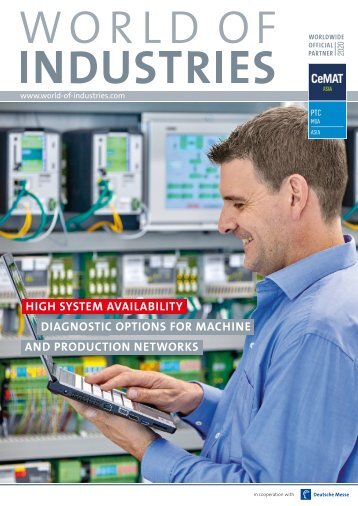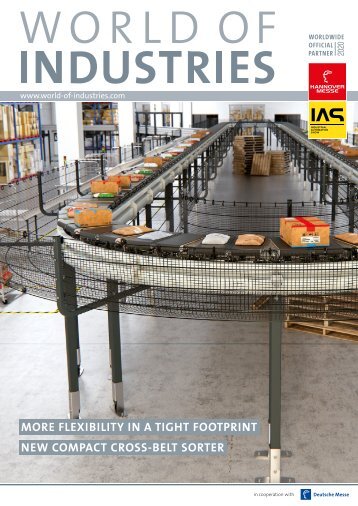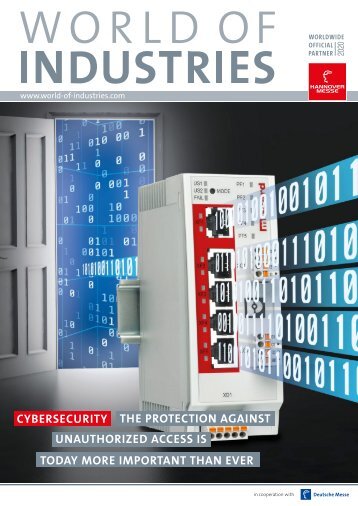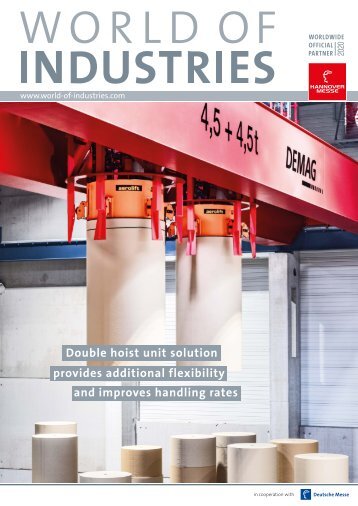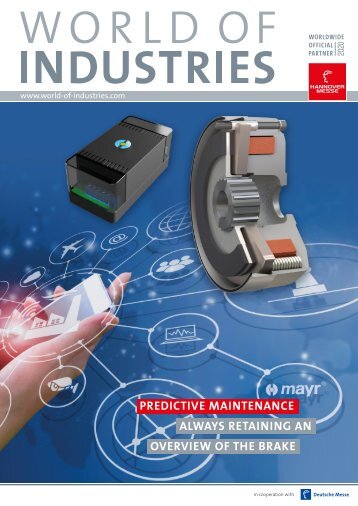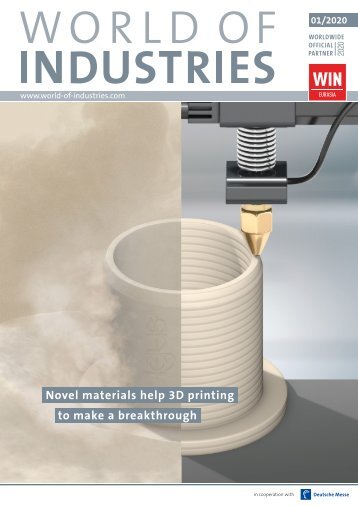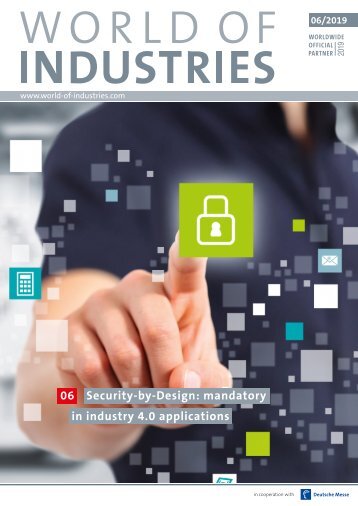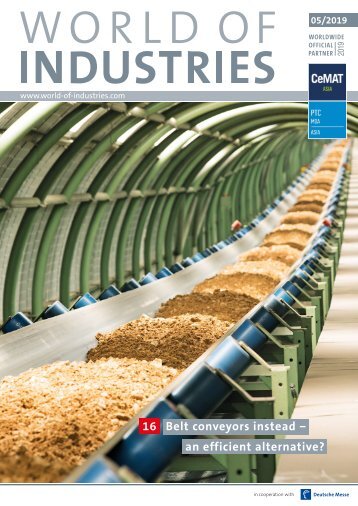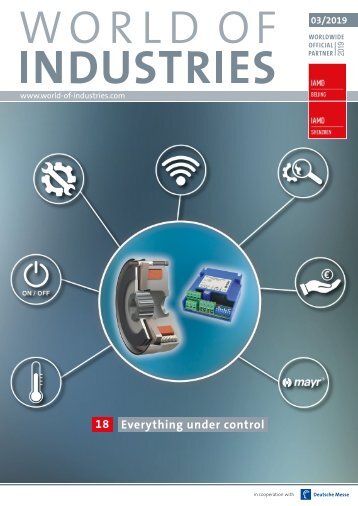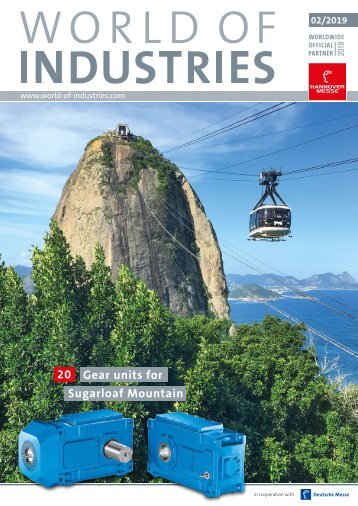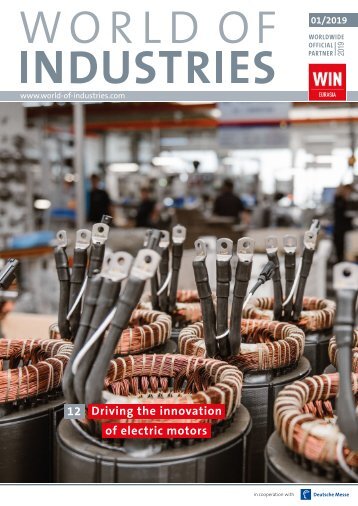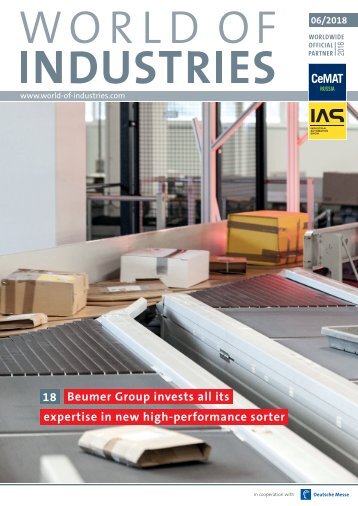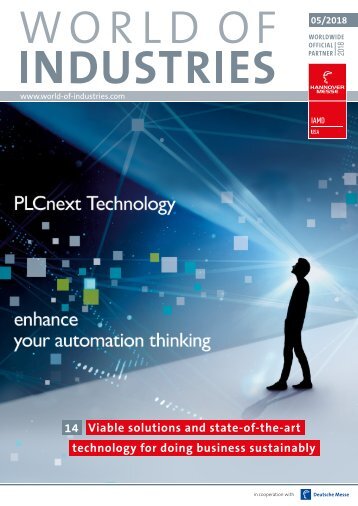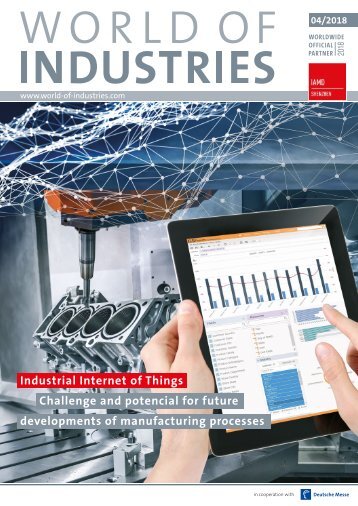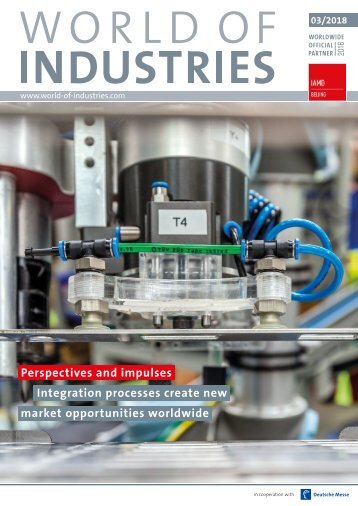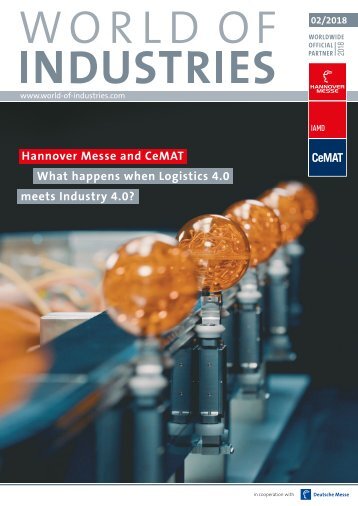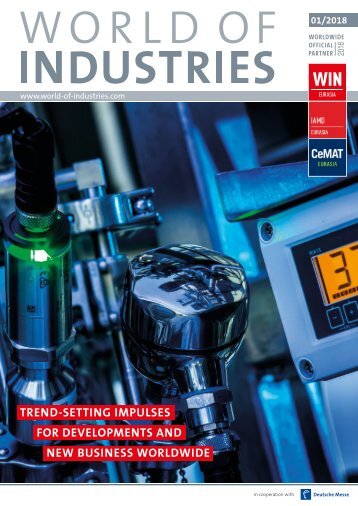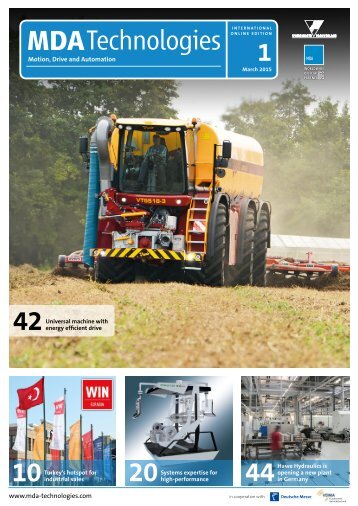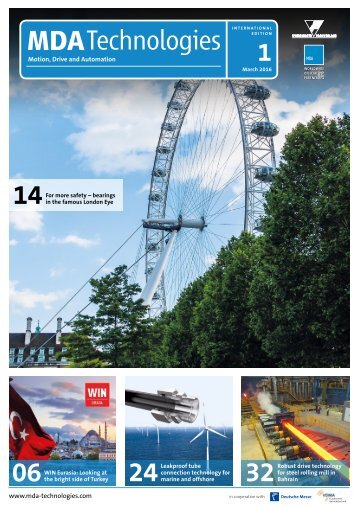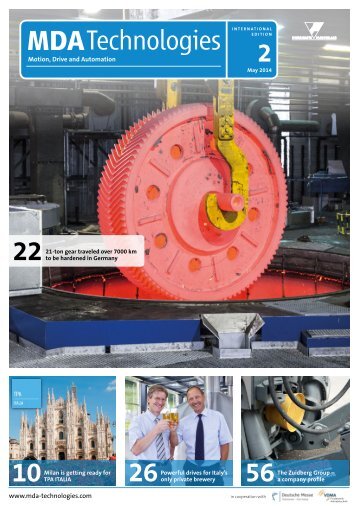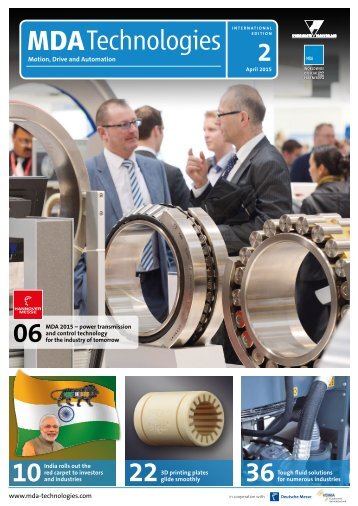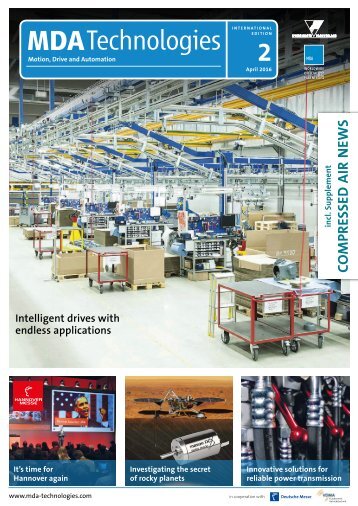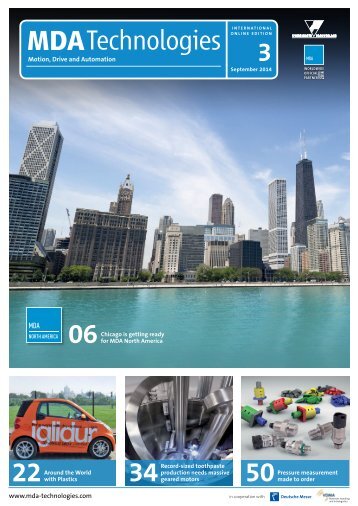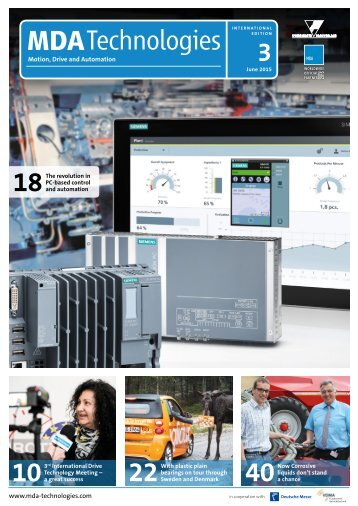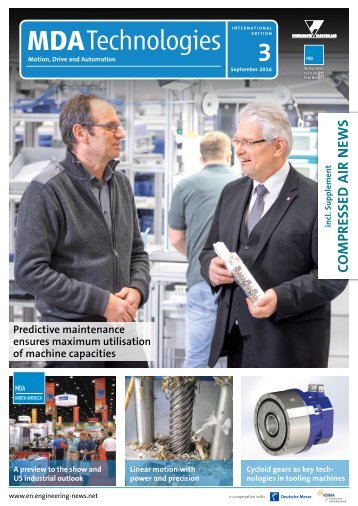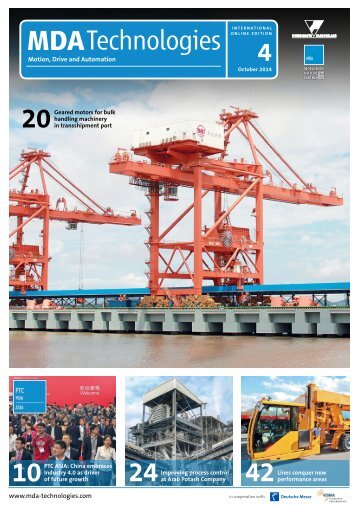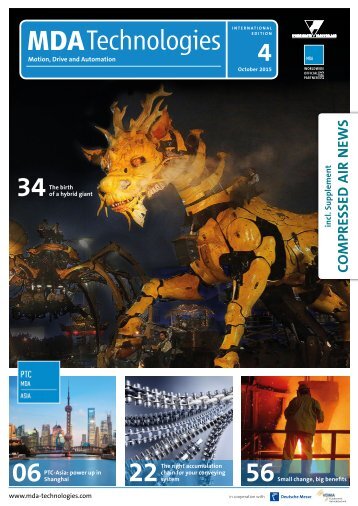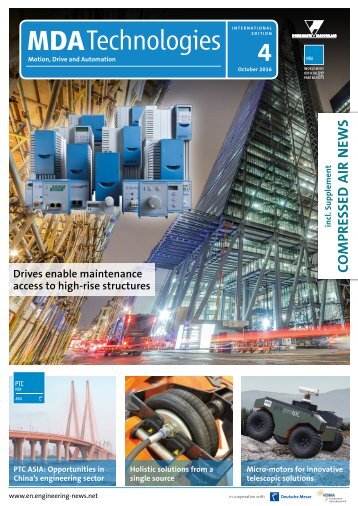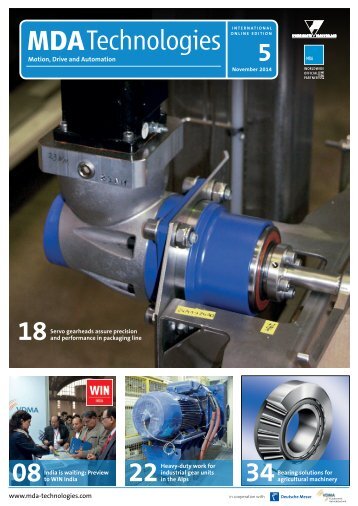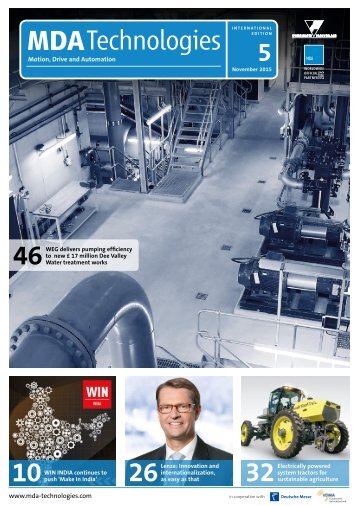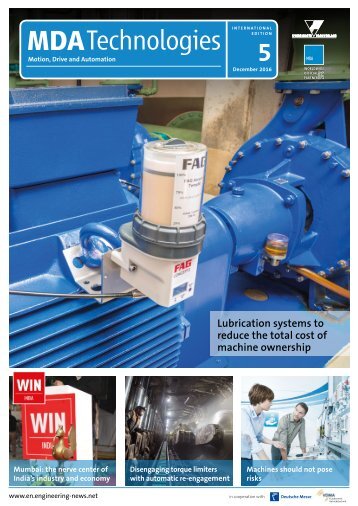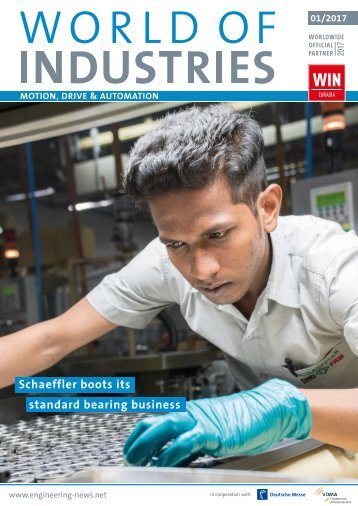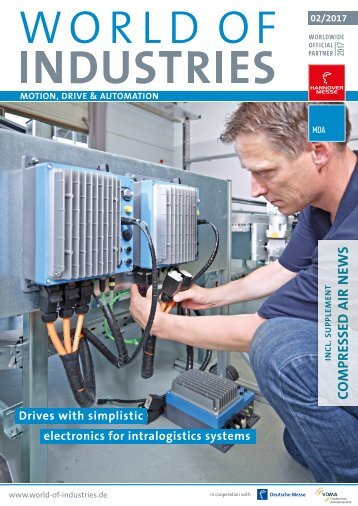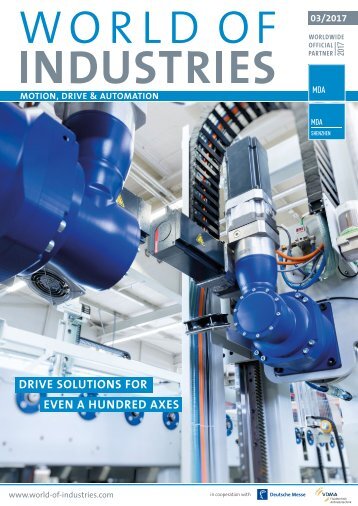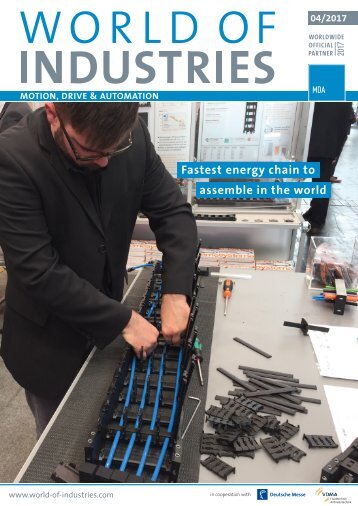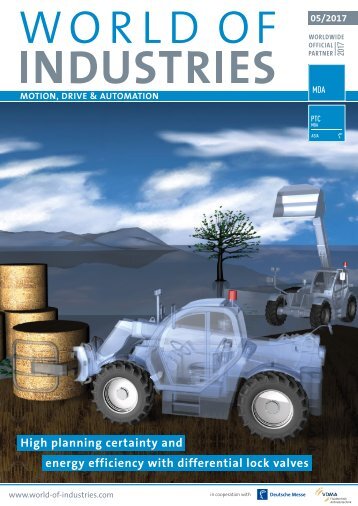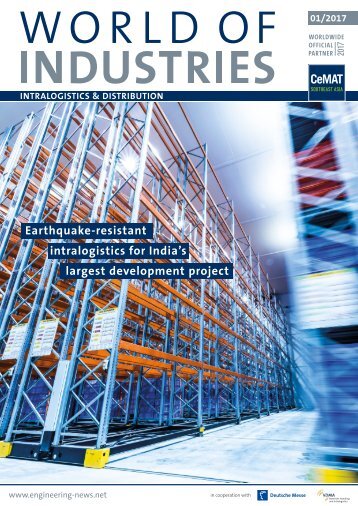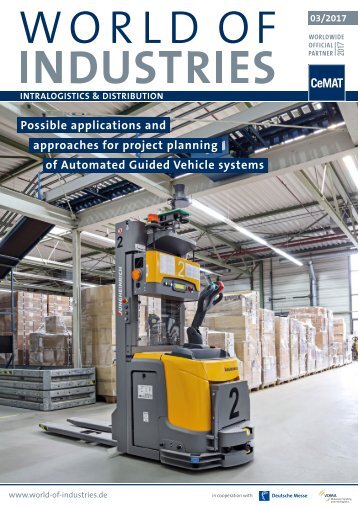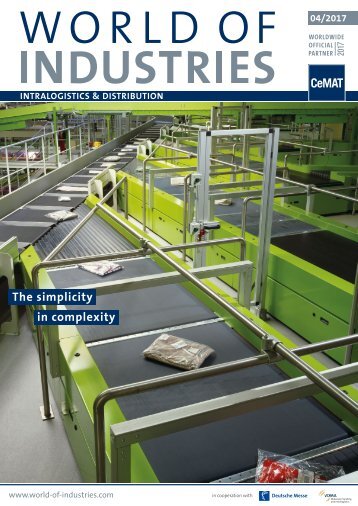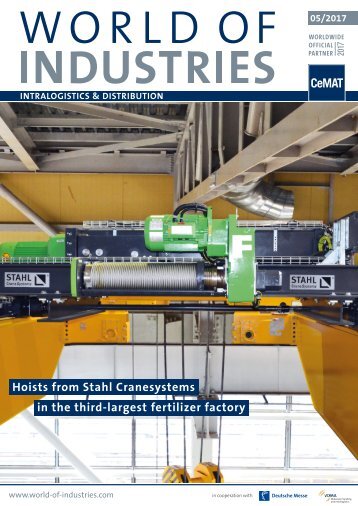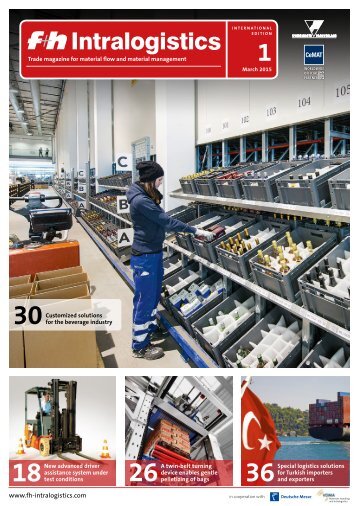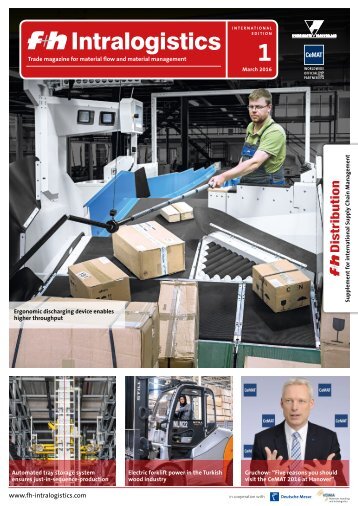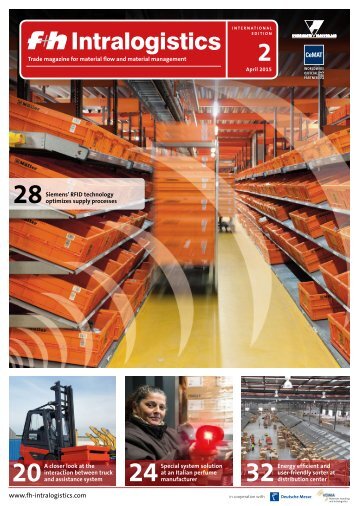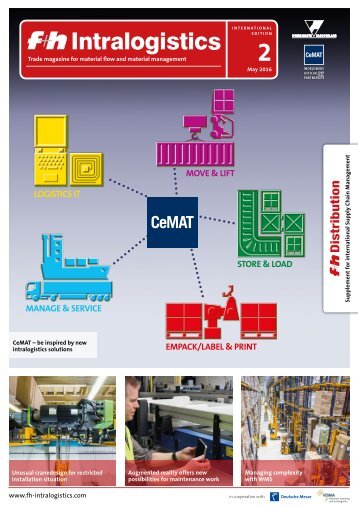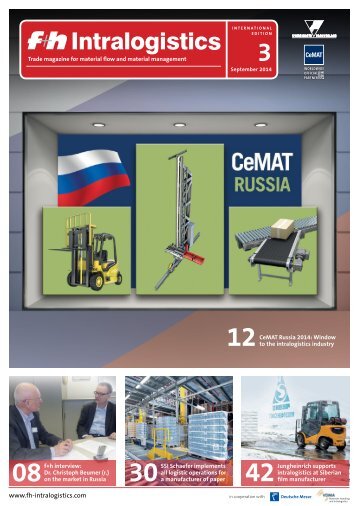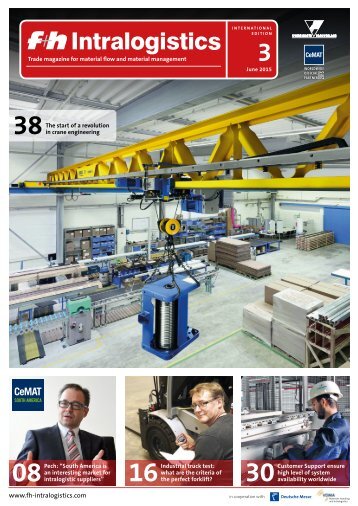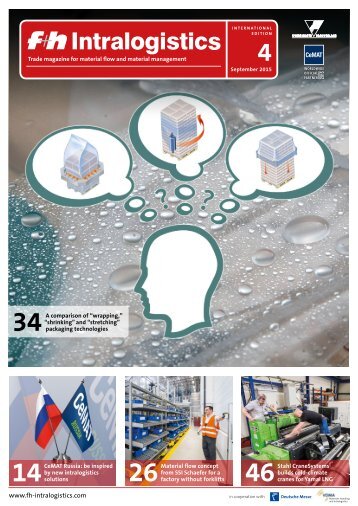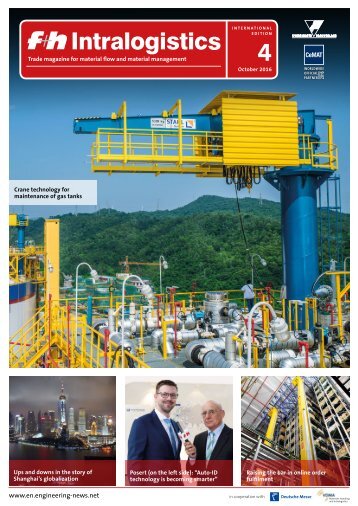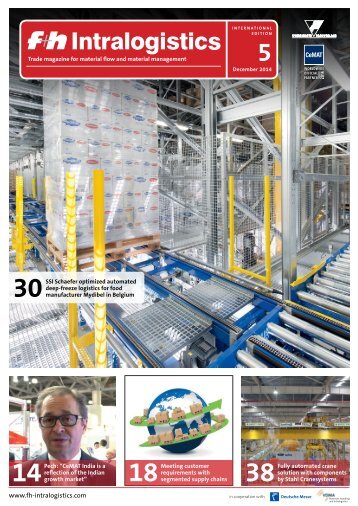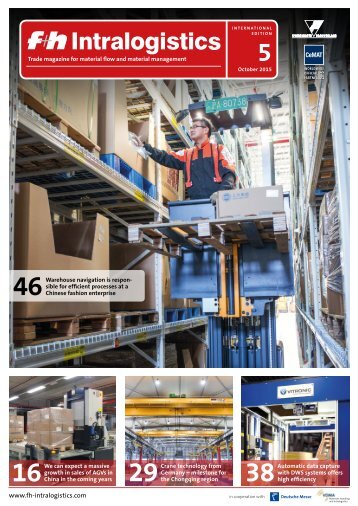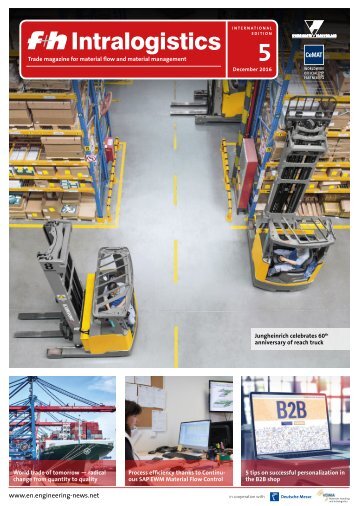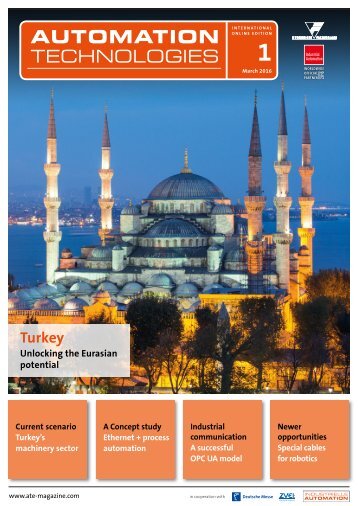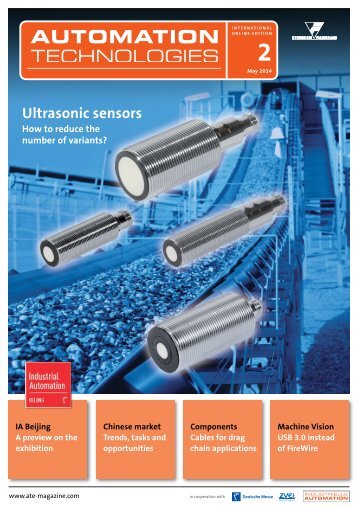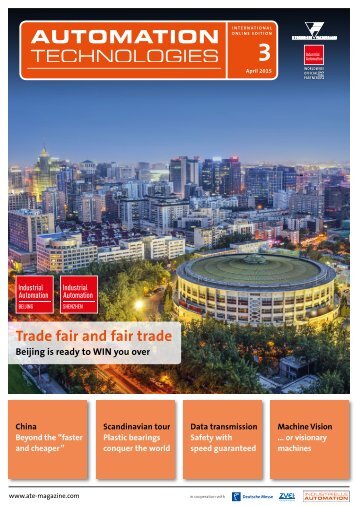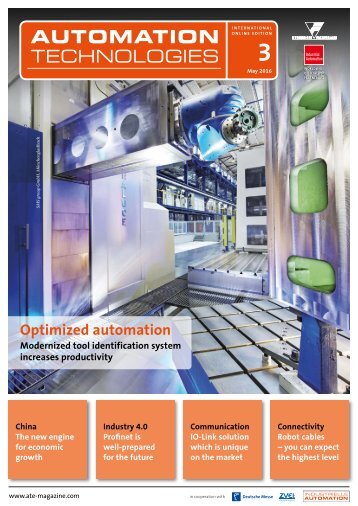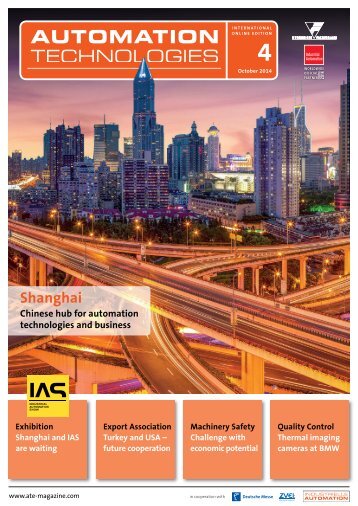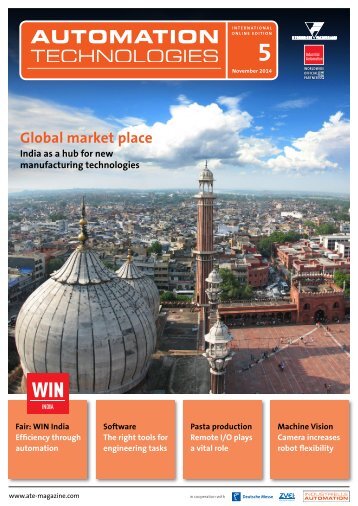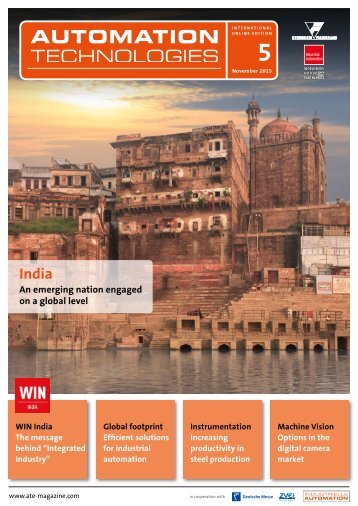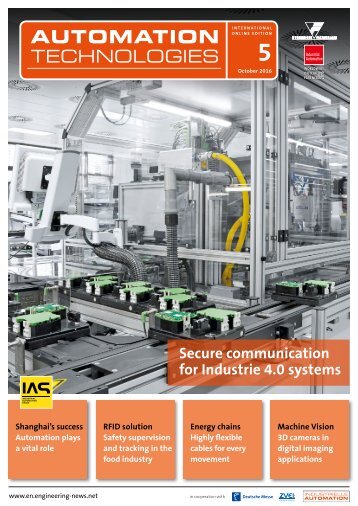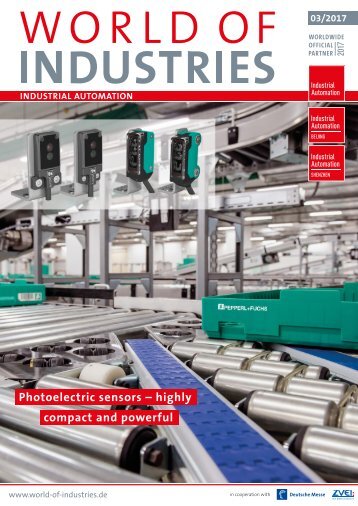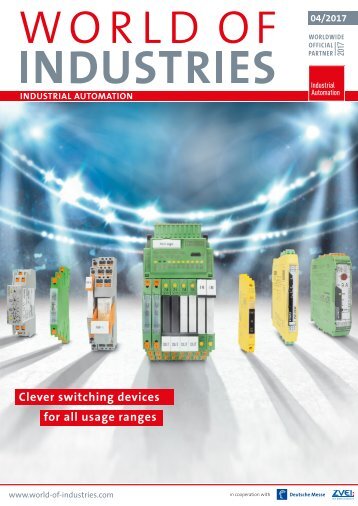MDA Technologies 3/2016
- Text
- Mda
- Technologies
company’s network.
company’s network. Industry 4.0 is primarily based on comprehensive networking of company and business processes - from ERP (Enterprise Resource Planning) level to sensor/actuator level. This is the only way to ensure that data from production facilities is supplied directly to the material, planning and production control systems. Communication between machines and plants will enable a selfcontrolling and self-optimising production system to be achieved. To facilitate smooth and complete networking of systems in the production environment, there is a definite need for uniform standards. In addition to standardised communication protocols, standardisation at a physical level - data network cables and connectors - will also play a critical role in its success. Cable 4.0 Reliable networking of production across all levels is only possible with a comprehensive cabling and connection concept that allows standardised installation. Although Ethernet has established itself as a standardised technology, different applications have very diverse requirements in terms of data rates, mechanical robustness and system-specific specifications. In a production environment, where entire machines and plant components are communicating with one another and with the ERP level, an adequate data rate must be ensured in the backbone of the plant. This prevents bottlenecks and enables plant components to be upgraded or expanded at a later date. Therefore, plants designed with the Industry 4.0 vision need to have a much more consistent modular design. Cabling complying with the Cat.6A standard and with data rates of up to 10 Gbit/s, is definitely future-proof in the plant backbone. This network cabling offers sufficient reserves, thus ensuring possibility of a future expansion. These cables are normally installed in cable conduits or cable ducts. However, for larger, moving plant components the cables often have to be routed using drag chains. To meet these requirements Lapp has developed its ‘Etherline Cat. 6A FD’ cables, which are suitable for drag chain use, and guarantee reliable data transmission over several million bending cycles. However, Cat.6A is not just about the backbone of the plant. Complex sensors and industrial cameras, also need these kinds of network connections as they have to transmit higher data rates. Apart from cabling, even the connectors need to comply with the Cat. 6A standard. M12 connector is a good example of this. To meet the Cat. 6A requirements, the well-known D-coded M12 connector has recently been supplemented with an X-coded version. and to failure. Lapp has developed the Etherline EC cables especially for these applications. The 4-core Cat5e Ethernet cables are only 5 mm thick and allow a small minimum bending radius of just 16 mm. This means that even drag chains can have very small dimensions, with a minimum bending radius of 40 mm. This is achieved with a compact star-quad structure and thin AWG26 braids. The star quad design means that the cores are not twisted in pairs, as is normally the case with data cables, but all four cores are twisted together. The robust outer sheath enables the cable to be used with high mechanical stresses or in oily environments. The M8 connector provides another way of saving space. It is considerably smaller than the M12 connectors commonly used in Industrial Ethernet. The compact Etherline EC cables and M8 connectors are available as an assembly, which combines the robustness with protection degree complying with IP67. The examples show that modern Ethernet cabling solutions can be used to achieve tailored networking. Existing plants can already be optimised to provide the necessary data rate, mechanical stability and environmental conditions that make them ready to be part of the Smart Factory of the future. Photographs: teaser fotolia, other U.I. Lapp GmbH www.lappkabel.com Sometimes four is better than eight MACHINE ELEMENTS Within a machine or production cell, 4-core Cat. 5 cables with a maximum data rate of 100 MBit/s are used most frequently. This is normally sufficient to network decentralised IO systems or machine-based visualisation systems. Industrial Ethernet systems such as Profinet, Ethernet/IP and EtherCat are frequently used at this level. The major advantage of 100 MBit/s is that four cores are enough, rather than the eight which are necessary for a Gigabit transmission. This significantly reduces the connection costs and the cables are more compact. Space-saving solutions Most modern machines tend to have little space available for the sensor/actuator level. If you then want to integrate sensors and small decentralised I/O systems within these restricted spaces into the Ethernet network, in handling machines for example, this can cause problems. The Cat.5 Ethernet cables that are generally used today often need too much space because of their large outer diameter and bending radii. Either the machine has to be built larger, or the cable has to be installed without the necessary bending radius specified for installation. This can result in damage to the cables About Lapp The company Lapp Kabel, based in Stuttgart, was founded in 1959 by Oskar Lapp with ‘Ölflex’ the first industrially produced signal cable in the world. Today the company produces cables and conductors for different industries and markets: mechanical and systems engineering, the automotive industry, MSR technology, electrical and installations engineering, and more. The Lapp Group has 39 sales companies, 17 production sites and approx. 100 partners worldwide. The company employs 3300 people. In the 2014/2015 business year, Lapp Group generated revenue of 886 million euros. MDA Technologies 3/2016
Bending vibration damping for wheeled loaders Argo-Hytos provides vibration damping systems in different forms of construction and combinations of function for springless mobile utility machinery. Common to all is that the movement of the bucket or the Schaufel lifting arm structure is uncoupled from the vehicle using a hydraulic accumulator. Pipe-break protection and constant access to the storage areas just as easy to ingrate as pump safety devices and outlet valves. The individual functional modules can be combined into a specific control block and integrated into the hydraulic system on hand without a great effort. The installation can be designed both for series production as well as for retro-fitting. W.E.St. Elektronik’s new multifunctional power amplifier The company W.E.St. Elektronik GmbH has developed a new power amplifier for a directional valve with 2 solenoids, or for 2 independent pressure or throttle valves with 1 solenoid, which combines many features of previous amplifiers in a single device. This results in shorter delivery times and enables a wide range of applications and a cost-effective store keeping for customers. Various adjustable parameters e.g. the free adjustment of the nominal solenoid-current, a very robust closed loop current control and a better signal resolution allow for an optimum adaptation to valves of various manufacturers. This leads to further cost reduction because a familiarization in different power amplifiers is not necessary. Another advantage is the integrated USB interface, which enables the parameterization with an inexpensive standard USB cable. Special programming cables are no longer required. A higher processing power, secure data saving with automatic error correction, higher MTTFD values and last but not least the DNV-GL certification is further significant features. www.w-e-st.de/en www.argo-hytos.com Wandfluh and HED co-operate in the field of controls Wandfluh and the US electronics manufacturer HED have signed a co-operation agreement. The first projects have already been successfully carried out. One of the applications is for a lumber transport trailer with a payload of 10 t, which in inaccessible terrain can be hydraulically accelerated or slowed too from the display in the towing vehicle. Wandfluh defined the overall concept here and programmed the HED components. The extended product sector makes customer specific hydraulic solutions in the moving or stationary sector possible. The components integrated in this way will come onto the market under the label of “Wandfluh powered by HED”. www.wandfluh.com
- Page 1: Motion, Drive and Automation INTERN
- Page 4: MDA North America: Discover new tec
- Page 7 and 8: Antriebstechnik Focus on industry s
- Page 9 and 10: MDA North America 2016 Motion, Driv
- Page 11 and 12: Worldwide News Mayr power transmiss
- Page 13 and 14: Servo motors with new multi-turn en
- Page 15 and 16: Worldwide News The partner country
- Page 17 and 18: We Are Shaping the Digital Future D
- Page 19 and 20: could put British production sites
- Page 21 and 22: In conversation with Adnan Dalgakir
- Page 23 and 24: Hamburg MDA Technologies 3/2016
- Page 25 and 26: screw. The key to making this solut
- Page 27 and 28: time and torque during rotation. In
- Page 29 and 30: Permanently sealed - independent of
- Page 31: F or more than four years the world
- Page 35 and 36: About Sumitomo Sumitomo (SHI) Cyclo
- Page 37 and 38: EXPLOITING A NEW BUSINESS MODEL In
- Page 39 and 40: About ifm electronic gmbh Founded i
- Page 41 and 42: The lift and carry crane in detail
- Page 43 and 44: 02 Engine stop without additional b
- Page 45 and 46: UL certified AC vector drives for C
- Page 47 and 48: COMPRESSED AIR NEWS Compressed Air
- Page 50 and 51: COMPRESSED AIR NEWS WWTP gains turn
- Page 52 and 53: COMPRESSED AIR NEWS Product News Tu
- Page 54 and 55: COMPRESSED AIR NEWS Product News 10
- Page 56: Tooth Chain Inverted Tooth Chain Dr
Inappropriate
Loading...
Mail this publication
Loading...
Embed
Loading...

